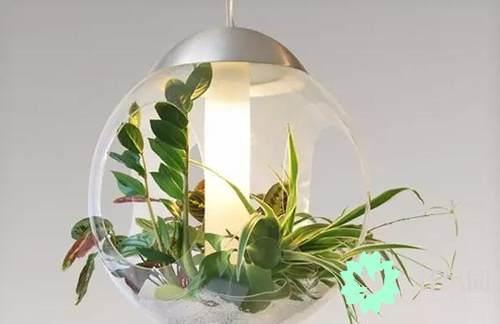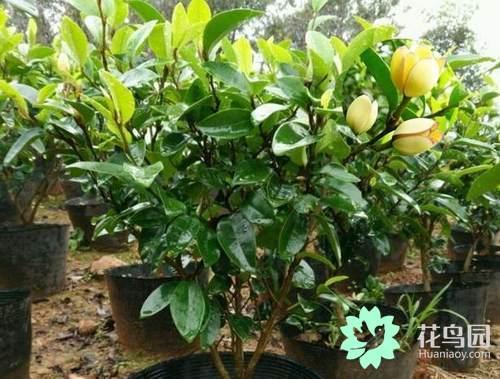Plants: we can also generate electricity. Can you believe it?

The story of a group of whimsical scientists trying to generate electricity from plants. No, it's not the lemon battery or the apple battery you think. What we're talking about here is to use plants growing in the land to generate electricity by capturing the electricity generated during their metabolism.
These scientists, from the Department of Environmental Technology at the University of Wageningen in the Netherlands, have spent nearly 10 years proving to the world that plant power generation can be a milestone in promoting new ideas on energy and environmental protection. This is true: if you want to be rich, have fewer children and grow more trees.
What is plant power generation?
The essence of plant power generation is to use microbes in the soil to generate electricity. So why is it called plant power generation, because the main energy material in the process of power generation comes from organic matter produced by plant photosynthesis.
Only a small part of these organic matter is provided for the growth of the plant itself, and most of the rest is secreted into the soil environment through the plant root system. On the other hand, some specific "electricity-producing" microorganisms existing in the soil can make effective use of this organic matter and oxidize it through the internal metabolism of the cell. and the electrons produced in this process are transferred to the outside of the cell through the cell's respiratory chain.
If the cathodes and anodes of the circuit are placed in the soil, these electrons will eventually be received by the anode and then transferred to the cathode through the external circuit. At the cathode, electrons combine with oxygen in the air and add hydrogen protons from the anode to form water. Throughout the process, the photosynthesis of plants provides basic nourishment for "electricity-producing" microorganisms to generate electricity, and the artificial external circuit is responsible for collecting electricity.
Basic schematic diagram of plant power generation
Difficulties in plant power generation
Although the principle of plant power generation is not difficult, scientists need to solve many scientific and technological problems in order to move it from the laboratory to real life.
01
Low power production
The rated voltage in the plant power generation system is fixed, about 1.28V. Unlike the voltage, the current is restricted by many factors, such as the internal structure of the system, the growth state of plants and microorganisms, and operating conditions. The magnitude of electricity production current may be completely different in different plant power generation systems. Therefore, an important prerequisite for the application of plant power generation to life is to find a suitable plant growth system to make the electric power reach a certain standard.
02
High cost
Artificial electrode materials need to be introduced into plant power generation system, which not only has good electrical conductivity, but also needs to be conducive to the growth and attachment of microorganisms. In order to effectively collect the current, some precious metal wires need to be used to connect these carbon electrodes to the external circuit. The use of these precious metals not only greatly increases the cost of plant power generation system, but also brings environmental pollution and potential ecological harm. How to solve these problems is also the most important thing to pay attention to in the process of promoting plant power generation.
03
It is difficult to collect
Scientists are trying to tap the power production capacity of plants to generate electricity, but the value of this electricity is not very high. For example, to charge an Iphone phone (5W), we need at least 2 kilowatts of anode material area with the highest power generation (3.2W / mm). Such a large area can only be used to charge a mobile phone, to meet the normal needs of household appliances seems to be completely impossible.
Of course, it can not deny the significance of plant power generation, although plant power generation is very small, but it can produce electricity 24 hours a day. Making full use of this characteristic, scientists have proposed to use external capacitors to collect current to supply power. First, the stored small electric energy is accumulated, and then the large-scale circuit components are converted into relatively high power output. The introduction of capacitors in plant power generation system has laid an important foundation for promoting the comprehensive and large-scale practical application of plant power generation.
Plant power generation is not far away from us.
Wageningen University has always encouraged students to start entrepreneurial activities, so the school funded the plant power generation project to set up a small start-up company called Plant-e. Now the company has developed several types of products. For example, the gadgets responsible for teaching and creative homes, of course, are too small to provide electricity; there are mobile power generation modules that can be used on green roofs or building walls, laying a layer of plants on the roof, warm in winter and cool in summer, and large-scale, practical-friendly tubular systems that can power LED lights on both sides of the road.
(a) small potted plants for power generation (for teaching, furniture decoration, etc.); (b) green roof modules for power generation; and (c) tubular plant power generation system. This configuration is suitable for large-scale practical applications in wetlands and natural ecosystems.
These products have been promoted to 11 cities in the Netherlands, and Plant-e has specially provided the University of Wageningen with a power supply system for the lighting of information boards on campus. The next step of the company's plan is to enter the Chinese market and provide new ideas for building a Chinese sponge city. Maybe soon, we can really use the park green space to generate electricity.
- Prev

A new potted plant with a chic appearance of goldfish vine
Goldfish vine is a kind of plant suitable for cultivation of Cymbidium, it can grow very long vines, and the leaves are very uniform, many flower friends also like to cultivate such a goldfish vine and cultivate it at home.
- Next

Pot planting process of Michelia mollissima
Michelia mollissima is an evergreen shrub with a height of 2-7 meters, many branches, dense bushes, glossy oval or long oval leaves, green flowers, small and erect flowers, white and milky yellow flowers according to varieties.
Related
- Wuhan Hospital Iron Tree Blooming Result Was Instantly Frightened by the Gardener Master
- Which variety of camellia is the most fragrant and best? Which one do you like best?
- What is the small blue coat, the breeding methods and matters needing attention of the succulent plant
- Dormancy time and maintenance management of succulent plants during dormancy
- Minas succulent how to raise, Minas succulent plant pictures
- What are the varieties of winter succulent plants
- How to raise succulent plants in twelve rolls? let's take a look at some experience of breeding twelve rolls.
- Attention should be paid to water control for succulent plants during dormant period (winter and summer)
- Watering experience of twelve rolls of succulent plants
- Techniques for fertilizing succulent plants. An article will let you know how to fertilize succulent plants.

